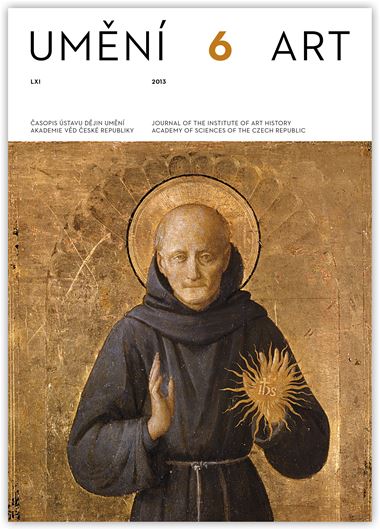David Voda – Sabine Voda Eschgfäller
Goetheanum z chlebové střídy. Náhrobní stéla Emílie Hudečkové v Olomouci v kontextu antroposofické sepulkrální plastiky a okultní praxe komunikace s mrtvými
This article seeks to describe the nature and principles of the anthroposophical or Goetheanum style, in particular its occultist foundations, using the example of a rare sepulchral sculpture in Olomouc by the dilettante sculptor and anthroposophist Emílie Hudečková (1890–1956). The Goetheanum style emerged after 1913 in the Swiss village of Dornach, fostered by the Swiss-Austrian reformist architect, artist, spiritual teacher, and founder of anthroposophy Rudolf Steiner (1861–1925), whose work has in recent years been attracting renewed interest from art historians. The author analyses the occult practice of communicating with the dead and how it influenced architectural lines, surfaces, and forms. Within this style, a work of architecture represented an organic force field that grants ingress into the spiritual world and allows the ‘dead’ to return to the physical world. The spiritual world, according to anthroposophical theory, also shaped the main stylistic criteria of the Goetheanum style: a doubly bent surface (die doppelt gebogene Fläche), or the characteristic tympanal, ‘spiritual’, cephalic parts typical of anthroposophical architecture, furniture, and so on. The author situates the tombstone of Emílie Hudečková, the model for which was made of bread between 1949 and 1953, in the context of the two Goetheanum buildings (the first from 1913–1920, which burnt down in 1922–1923; the second from 1925–1928), but also in the period context of anthroposophical sepulchral sculpture and commemorative art in central Europe. Important works in this style include the tombstone of Oda Waller in Munich (done in cooperation with Rudolf Steiner, Cécile Peipers, after 1913), Michael hilf!, a fifteen-metre-high monument to the fallen soldiers of the First World War made of copper and concrete – a prime example of the crystallisation of the anthroposophical style (Walther Kniebe, 1928–1932, destroyed in 1940), and the sepulchral sculpture of Felix Kayser from the 1930s and of Günter Oling from 1943–1945.
Full-text in the Digital Library of the Czech Academy of Sciences:
https://kramerius.lib.cas.cz/uuid/uuid:74c5abde-35b7-4d8a-a531-7c9639d2b094
< back

